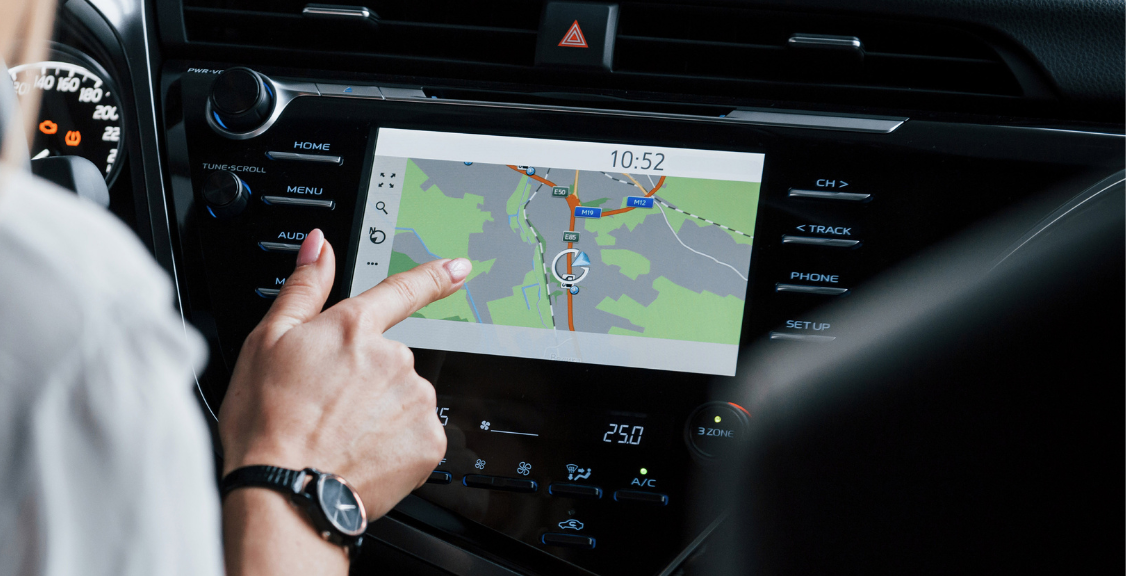Key Takeaways
- Most ELDs come with a monthly fee that covers software updates, cloud storage, compliance tools, and customer support.
- One-time payment ELDs are available but may lack ongoing updates, support, and advanced features.
- Fleet size, budget, support needs, and tech comfort should guide your choice of ELD pricing model.
- Understanding hidden fees and contract terms helps avoid unexpected ELD costs later.
- Choosing the right ELD pricing plan ensures long-term compliance, efficiency, and cost control.
Table of Contents
ELD Pricing Models
Electronic Logging Devices (ELDs) are required for most commercial drivers in the U.S. to meet federal regulations and maintain accurate records of service hours. As fleets and owner-operators choose the right ELD for their business, one of the most important factors is understanding how ELD pricing works. ELD providers offer different models, and the most common is a recurring ELD monthly fee that covers software access, cloud storage, compliance features, and technical support.
Some ELD systems come with subscription-based plans, while others offer a one-time purchase with limited or no ongoing support. Businesses must compare ELD costs, contract terms, and available features to find the best value. Choosing the right model depends on operational needs, support requirements, and long-term cost-efficiency. Understanding these ELD pricing plans helps avoid hidden fees and ensures compliance without overspending.
What is an ELD, and Why Do You Need One?
An Electronic Logging Device (ELD) is a part of technology used by commercial motor carriers to automatically record a driver’s driving hours and other essential data. ELDs connect to a vehicle’s engine to track when the vehicle is in motion, helping ensure compliance with federal Hours of Service (HOS) regulations. These regulations are designed to prevent driver fatigue by limiting how many hours a driver can work in a day and week. By automatically logging driving time, ELDs eliminate the need for paper logs, reducing the chance of errors and ensuring accuracy in compliance.

For fleet owners and operators, an ELD is a must-have tool. It helps meet legal requirements, contributes to overall safety and efficiency. Many businesses prefer ELD subscriptions because they offer ongoing software updates, cloud-based data storage, and customer support, which can save time and money on maintenance. Understanding ELD pricing and the associated ELD costs helps businesses choose the best solution for their fleet size and needs. If it is a large fleet or a small business, using an ELD ensures that drivers remain compliant with the law while improving operational efficiency.
Understanding ELD Pricing Models
The ELD demand offers different pricing structures based on the needs of drivers, owner-operators, and fleet managers. Understanding how ELD pricing models work helps avoid unexpected ELD costs and allows for better long-term planning. Most providers offer one of three main payment options: subscription-based, one-time purchase, or a hybrid of both.

Common ELD Pricing Models:
-
Subscription-Based (Monthly or Annual Fees):
- Users pay a recurring ELD monthly fee or annual rate
- Often includes cloud storage, mobile access, compliance tools, and support
- Suitable for fleets that want managed services and automatic updates
- Common in Software as a Service (SaaS) models
-
One-Time Purchase (No Ongoing Subscription):
- Pay once for the hardware and software license
- No recurring payments, but may lack regular software updates
- Limited customer support and minimal feature enhancements
- Ideal for small operations focused only on basic compliance
-
Hybrid Model (Upfront Cost + Monthly Fee):
- Pay for the device plus a lower monthly subscription
- Combines hardware ownership with access to cloud services
- Offers a balance of affordability and features
Choosing the right model depends on your business size, budget, and the level of service needed. Subscription-based ELD pricing plans provide convenience and ongoing value, while one-time purchase models may reduce upfront ELD costs but often lack ongoing support. Reviewing each model allows for smarter decision-making based on operational goals and total cost of ownership.
Breaking Down the ELD Monthly Fee
Paying a monthly fee for your ELD is common for most commercial fleets that use a subscription-based model. This ELD monthly fee covers several important features that help keep your operation compliant, efficient, and supported. It’s important to know exactly what’s included in the fee so you can understand the ELD pricing and avoid any unexpected costs after signing the contract.

What’s Typically Included in an ELD Monthly Subscription:
- Hardware Leasing – Many providers include ELD hardware as part of the monthly plan. Instead of buying the device upfront, fleets lease it with no added cost unless the device is damaged or lost.
- Cloud Storage – All driver logs and HOS data are securely stored in the cloud, giving fleets access anytime, from any device. This also helps during audits or inspections by making records easy to retrieve.
- Software Updates – Regular updates are part of most ELD subscriptions, ensuring the system stays current with regulatory changes and security improvements. This keeps the software compliant without requiring manual updates.
- Compliance Monitoring – Many providers include built-in tools that monitor real-time compliance. These features automatically detect violations, track hours, and notify both drivers and fleet managers to prevent errors.
- Customer Support – Subscription plans typically offer 24/7 or extended-hour support via phone, chat, or email. This is especially useful for fleets that operate around the clock and need quick issue resolution.
Recurring Costs vs. Hidden Costs
Recurring ELD costs are straightforward with a monthly or yearly plan, but some vendors may include hidden fees. These can include charges for activation, training, GPS add-ons, device replacement, or integration with other systems. It is important to request a full pricing breakdown to avoid paying more than expected.
Value-Added Services in Subscription Plans
Modern ELD pricing plans often include features further basic compliance, such as vehicle diagnostics, driver behavior monitoring, route tracking, and fuel efficiency tools. These extras can improve overall operations and reduce long-term costs, offering greater value compared to one-time purchase models.
Subscription-based ELD pricing models are designed to provide a complete, all-in-one solution that extends logging hours. By including essential services like cloud storage, updates, and live support, these plans help fleets stay efficient, legal, and scalable. Evaluating what’s included in the ELD monthly fee is essential to understanding its true value and how it fits your operation’s needs.
Are There ELDs Without a Monthly Fee?
While many businesses choose subscription-based ELD pricing models with recurring monthly fees, there are also options available that do not require ongoing payments. These ELDs typically involve a one-time payment for the hardware and software, making them an appealing choice for some fleets. But it is important to weigh the benefits and disadvantages of these models to decide if they align with your business’s needs.

What You Get with One-Time Payment ELDs
With a one-time payment model, you pay upfront for the ELD hardware and software license. This may sound like a great way to avoid ELD monthly fees, but it is essential to consider the trade-offs. Most of these devices include only the basics: logging hours of service (HOS) and ensuring compliance with federal regulations. However, some key features that are often included in subscription-based models may be limited or unavailable. These features include:
- Cloud storage for easy access to data
- Automatic software updates to stay compliant with changing regulations
- 24/7 customer support for technical assistance
Pros of One-Time Payment ELDs
- No Recurring Costs – With a one-time payment, you won’t have to worry about ELD monthly fees or annual renewals. This is ideal for businesses that prefer to keep their costs predictable and avoid ongoing payments.
- Simpler Setup – For smaller fleets or businesses with limited tech needs, a one-time payment ELD can be a simple, no-frills solution. You get the device, set it up, and start logging hours.
- Long-Term Investment – A one-time purchase may cost less than the total of monthly subscription payments, especially for fleets that do not require constant updates or extra features.
Cons of One-Time Payment ELDs
- Limited Features and Support – Most one-time purchase ELDs lack the extra services offered by subscription plans, such as real-time compliance monitoring, cloud storage, or advanced analytics. You also might not get the same level of customer support.
- Outdated Software – Without a subscription, you may not receive automatic software updates, which means your device could become outdated as regulations change. Staying compliant could require manual updates or additional costs for upgrades.
- Potential Additional Costs – While you avoid ELD monthly fees, you may face hidden costs in the form of device replacements, upgrades, or extra charges for features that are included in subscription-based plans.
Who Should Consider One-Time Payment ELDs?
One-time payment ELDs are best suited for small businesses or fleets with limited budgets that need only basic ELD functionality. If your fleet is small and doesn’t require advanced features or ongoing support, a one-time purchase could be the right choice. However, businesses that need constant updates, cloud storage, or 24/7 support may find that subscription models are a better long-term solution.
While ELD costs with a one-time payment may seem appealing initially, it’s important to assess the full scope of your needs. For some, the convenience and extra features of subscription-based ELD pricing models may justify the ongoing monthly fee.
How to Choose the Right ELD Pricing Model for Your Fleet
Choosing the right ELD pricing model for your fleet can feel overwhelming, especially with the many options available. If you are a small owner-operator or a large fleet manager, the model you choose affects your operational efficiency, budget, and compliance. Several factors should guide your decision-making process, ensuring that you select an ELD pricing plan that meets your needs without breaking the bank.

Factors to Consider When Choosing an ELD Pricing Model
- Fleet Size – Larger fleets may benefit from ELD subscriptions since they often come with volume discounts, robust customer support, and easy scalability. Small businesses or owner-operators might prefer a one-time payment model if they don’t need advanced features and can operate with fewer devices.
- Budget – Consider your upfront and long-term costs. ELD monthly fees can add up, but they often include ongoing support, updates, and cloud storage. On the other hand, a one-time payment might seem more affordable initially, but could lack the features and support that can save you money.
- Support Needs – Some fleets require 24/7 support due to their operational hours or technical needs. If ongoing customer support is essential, a subscription-based model with dedicated assistance will be beneficial. Smaller businesses that can troubleshoot basic issues might find a one-time purchase sufficient.
- Tech Literacy – Not all fleets have the same level of tech literacy. For those less proficient in technology operations, ELD subscriptions often include setup assistance, customer service, and simpler, user-friendly interfaces. Fleets with higher tech proficiency might manage well with a one-time payment ELD, where they can handle software updates and device issues themselves.
Red Flags to Watch Out For
- Hidden Fees – Some ELD providers might advertise low upfront costs, only to charge hidden fees later for software updates, data storage, or device replacements. Always ask for a clear breakdown of what’s included in the pricing to avoid unexpected costs.
- Limited Support – If an ELD provider does not offer clear customer support channels or charges extra for technical help, it could be a red flag. Support is essential, especially in compliance-heavy industries like transportation.
- Lack of Software Updates – If the ELD pricing model does not include automatic updates, you might risk non-compliance as regulations change. Avoid providers who do not offer a clear update policy, as staying compliant is essential.
Selecting the right ELD pricing model depends on your fleet’s size, budget, and technical requirements. By understanding the different factors at play, you can make a decision that aligns with your operational goals and ensures long-term value. Whether choosing a subscription-based model or a one-time payment, the key is to balance cost with functionality, ensuring that your fleet stays compliant, efficient, and supported.
Making the Right ELD Pricing Choice for Long-Term Compliance and Savings
Choosing the right electronic logging device involves understanding the different ELD pricing models and knowing what you are paying for. Subscription-based plans often include essential features such as hardware leasing, cloud storage, automatic software updates, compliance tools, and customer support. These plans usually come with a recurring ELD monthly fee, which can add up but often delivers consistent value, especially for fleets that need ongoing support and regular updates to meet changing regulations. On the other hand, one-time payment ELDs allow for upfront ownership without monthly costs, making them suitable for smaller operations that only need basic features and can manage without additional support or software updates.

Each ELD pricing plan comes with pros and cons depending on your fleet size, budget, and technology needs. Larger fleets benefit from the flexibility and support of subscriptions, while smaller or budget-focused operations may prefer one-time payment options to avoid recurring ELD costs. Essential things to consider include total cost, support availability, software maintenance, and hidden fees. Watching for red flags like poor update policies or a lack of clear support options can help avoid coming issues. Making a smart decision means balancing features with cost and choosing a solution that keeps your operations compliant, efficient, and stress-free.
Choose a Reliable ELD Solution That Fits Your Budget and Business Needs
Geosavi offers flexible and transparent ELD pricing options designed to meet the needs of fleets of all sizes. From affordable ELD monthly fee plans that include full support, automatic updates, and cloud-based storage, to one-time payment options for those who prefer to pay upfront, Geosavi gives you control over your ELD costs without sacrificing compliance or functionality. Our team understands the challenges that come with ELD selection and setup, so we provide responsive customer service, simple onboarding, and tools that are easy for any driver to use. No hidden fees, no confusing contracts, just clear, reliable solutions to keep your fleet running smoothly.
Contact us today to explore the best ELD pricing plan for your business. Our team is here to help you choose a model that saves money and fits your operation.